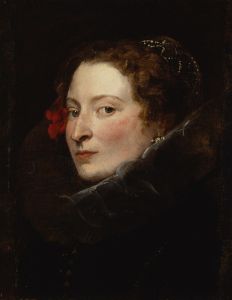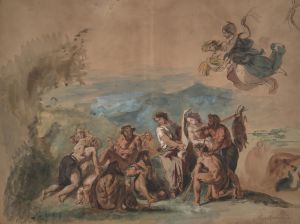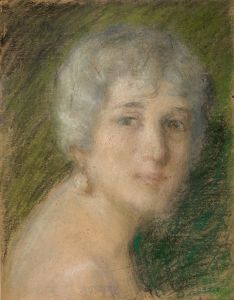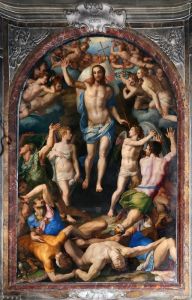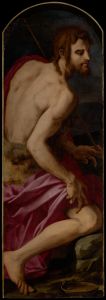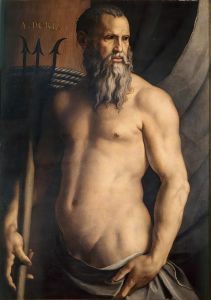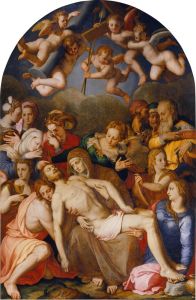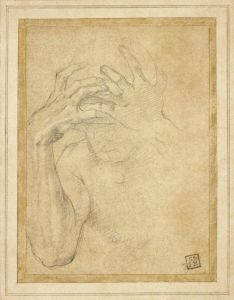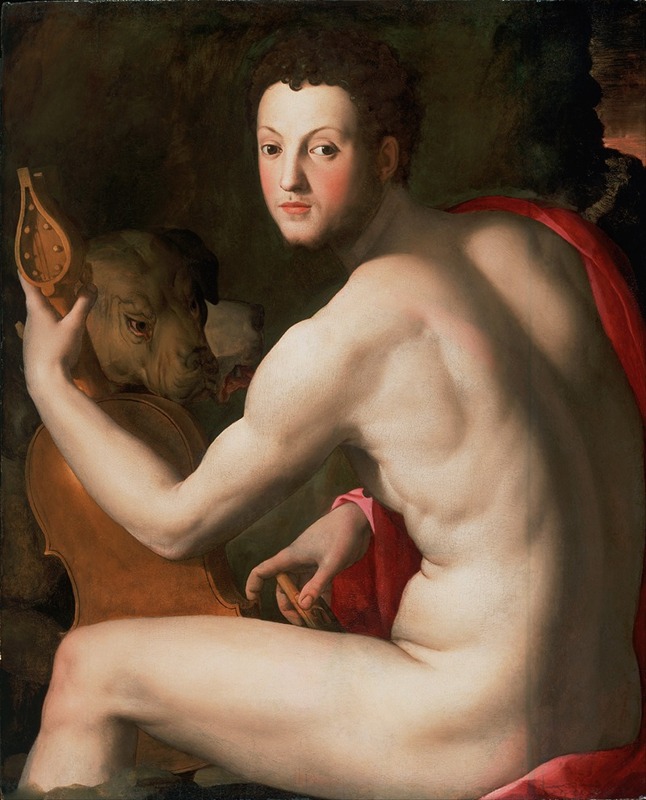
Portrait of Cosimo I de’ Medici as Orpheus
A hand-painted replica of Agnolo Bronzino’s masterpiece Portrait of Cosimo I de’ Medici as Orpheus, meticulously crafted by professional artists to capture the true essence of the original. Each piece is created with museum-quality canvas and rare mineral pigments, carefully painted by experienced artists with delicate brushstrokes and rich, layered colors to perfectly recreate the texture of the original artwork. Unlike machine-printed reproductions, this hand-painted version brings the painting to life, infused with the artist’s emotions and skill in every stroke. Whether for personal collection or home decoration, it instantly elevates the artistic atmosphere of any space.
The "Portrait of Cosimo I de’ Medici as Orpheus" is a notable painting by the Italian Mannerist artist Agnolo Bronzino, created around 1537-1539. This work is an exemplary representation of Bronzino's skill in portraiture and his ability to convey complex allegorical themes through his art. The painting is housed in the Philadelphia Museum of Art, where it continues to be a subject of interest for art historians and enthusiasts alike.
Agnolo Bronzino, born in 1503, was a prominent painter of the Florentine school and a leading figure in the Mannerist movement. He was known for his refined technique, elegant compositions, and the cool, detached beauty of his portraits. Bronzino served as the court painter to Cosimo I de’ Medici, the Duke of Florence, and produced numerous portraits of the Medici family, capturing their power and influence during the Renaissance.
In this particular portrait, Cosimo I de’ Medici is depicted as Orpheus, the legendary musician and poet from Greek mythology. Orpheus was known for his ability to charm all living things and even inanimate objects with his music. By portraying Cosimo as Orpheus, Bronzino not only highlights the duke's cultural patronage and appreciation for the arts but also subtly alludes to his political prowess and ability to bring harmony to his realm.
The painting features Cosimo in a classical pose, holding a lyre, which is traditionally associated with Orpheus. His semi-nude figure is rendered with Bronzino's characteristic attention to detail and anatomical precision, showcasing the artist's mastery of the human form. The background of the painting is dark and subdued, which serves to emphasize the figure of Cosimo and the symbolic elements of the composition.
Bronzino's use of symbolism in this portrait is significant. The depiction of Cosimo as Orpheus can be interpreted as a reflection of the duke's role as a cultural leader and his efforts to foster the arts and intellectual life in Florence. Additionally, the choice of Orpheus, a figure who could tame wild beasts with his music, may also suggest Cosimo's ability to govern and bring order to the state.
The painting is also notable for its Mannerist qualities, such as the elongated proportions of the figure and the sophisticated use of color and light. Bronzino's palette is typically cool and restrained, with a focus on subtle gradations of tone that enhance the sculptural quality of the figure. This approach contributes to the overall sense of elegance and refinement that characterizes Bronzino's work.
"Portrait of Cosimo I de’ Medici as Orpheus" is a testament to Bronzino's artistic prowess and his ability to convey complex ideas through portraiture. It remains an important work for understanding the intersection of art, politics, and mythology in Renaissance Florence. The painting not only celebrates the legacy of Cosimo I de’ Medici but also exemplifies the sophisticated artistry of Agnolo Bronzino, whose work continues to be admired for its technical brilliance and intellectual depth.





